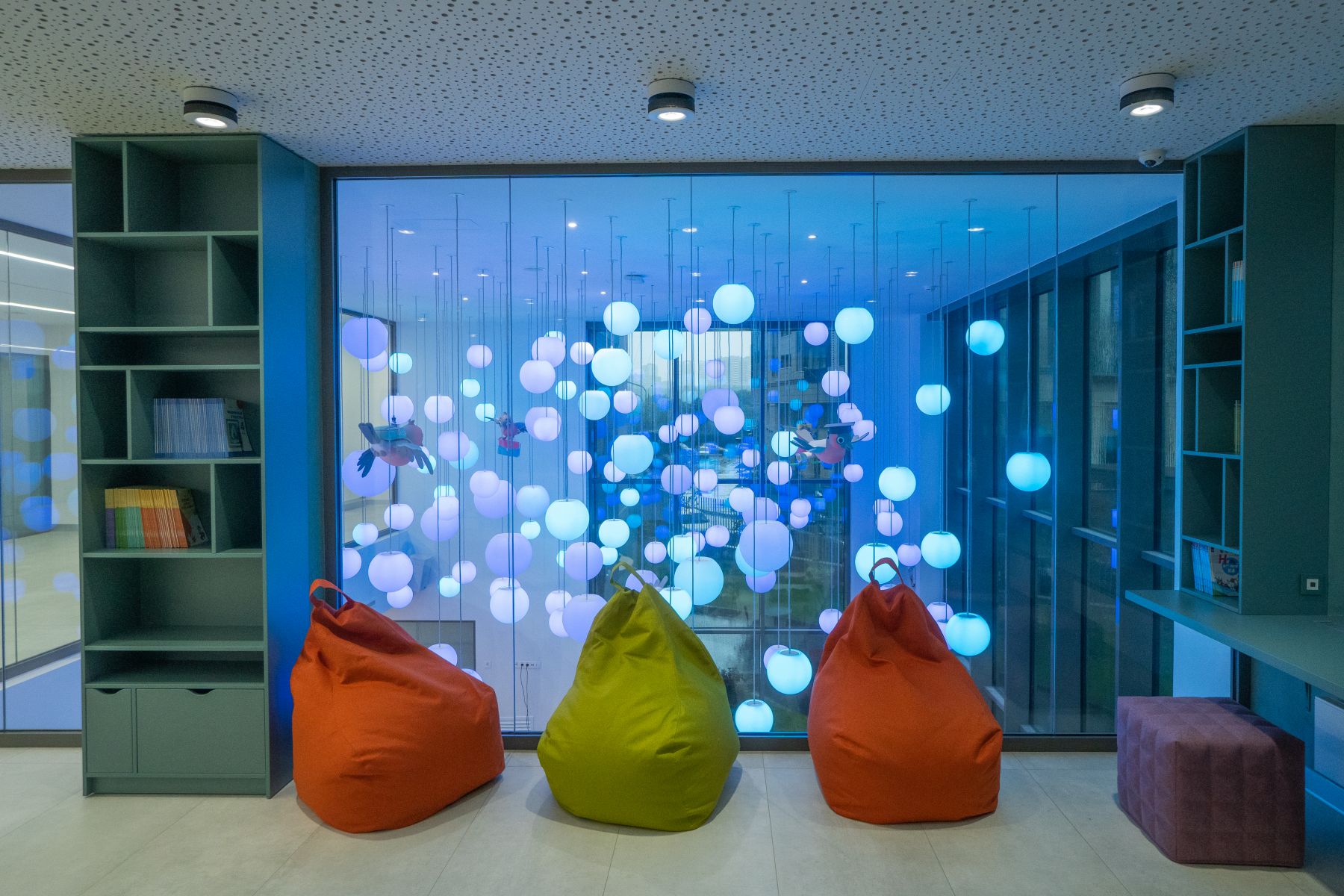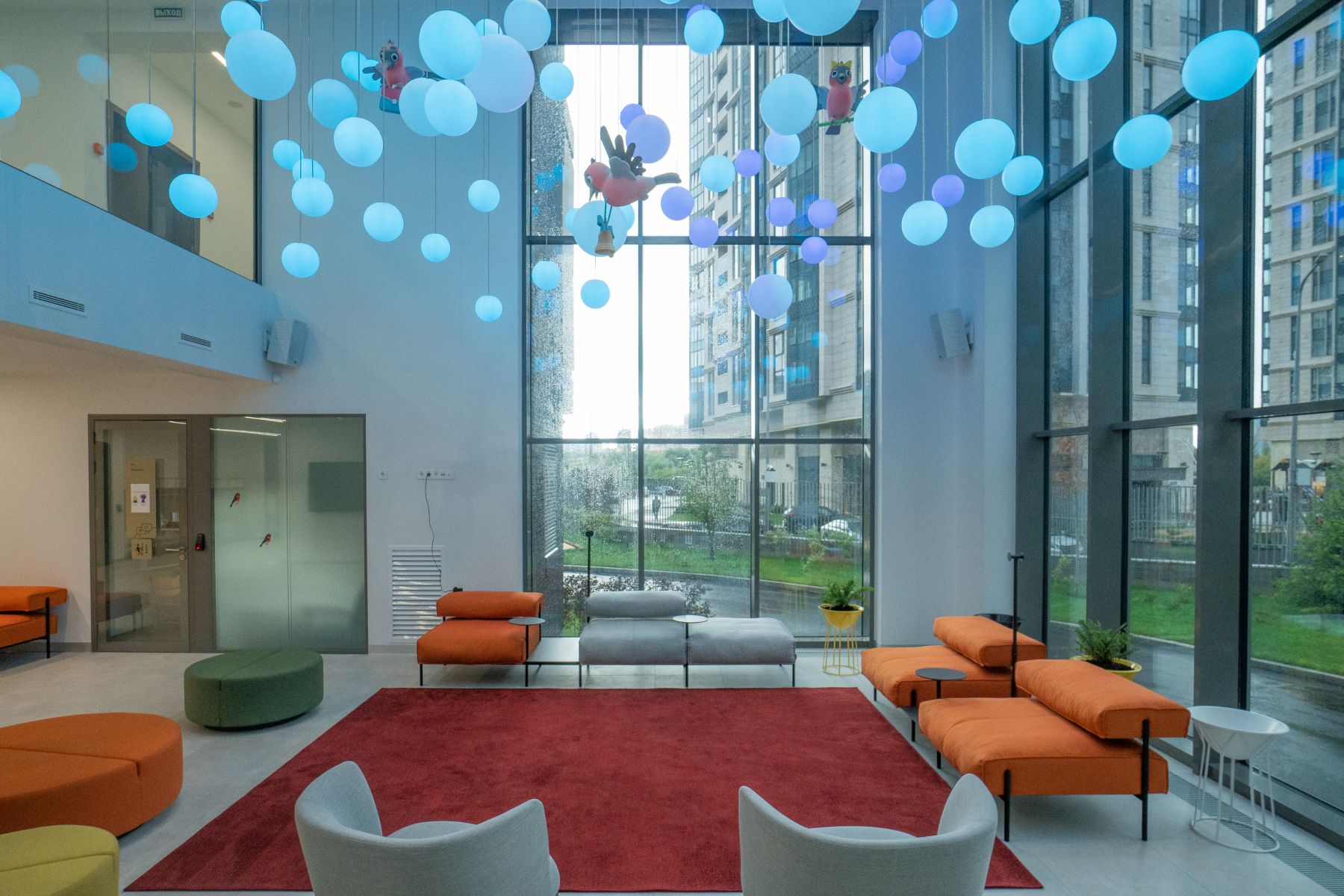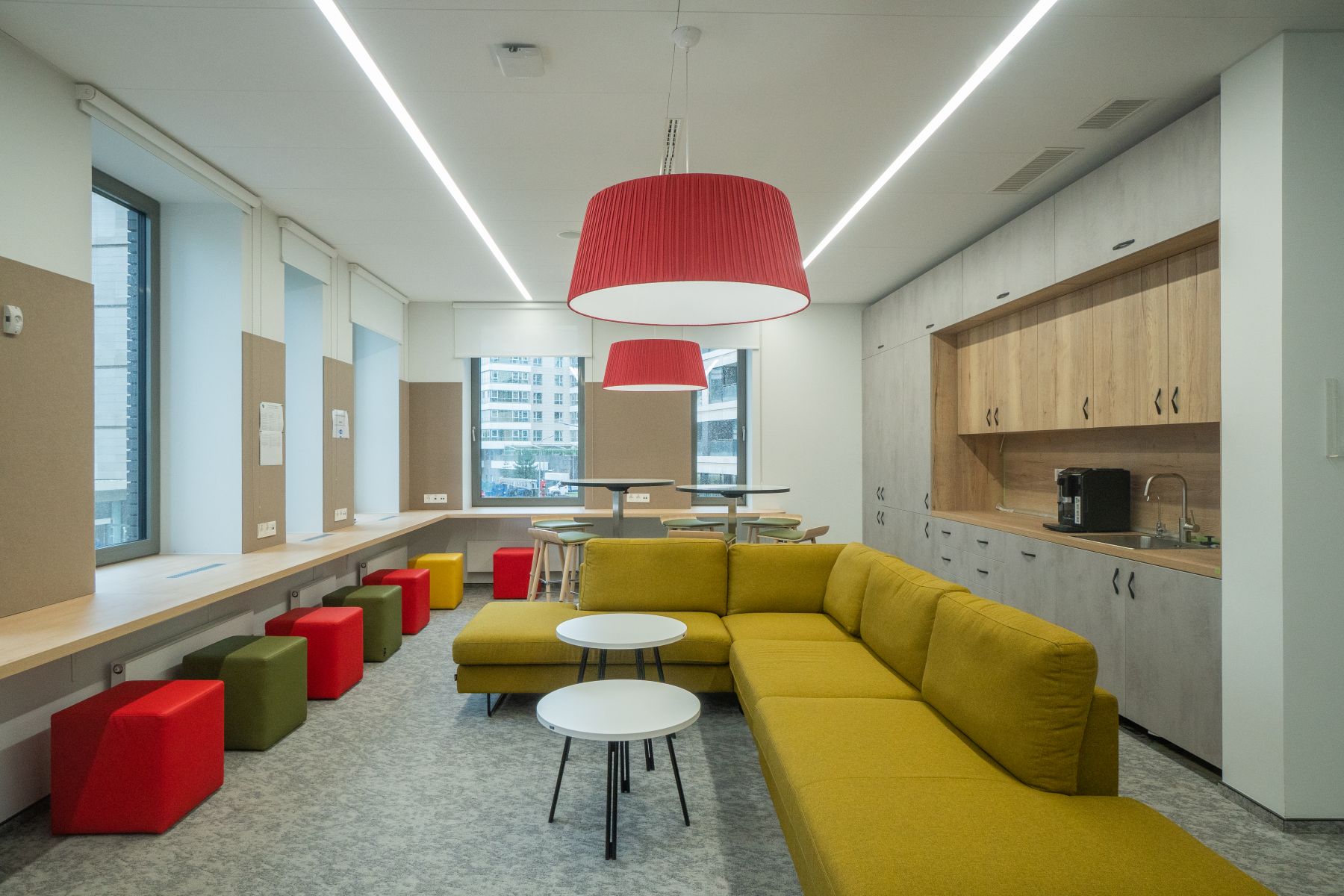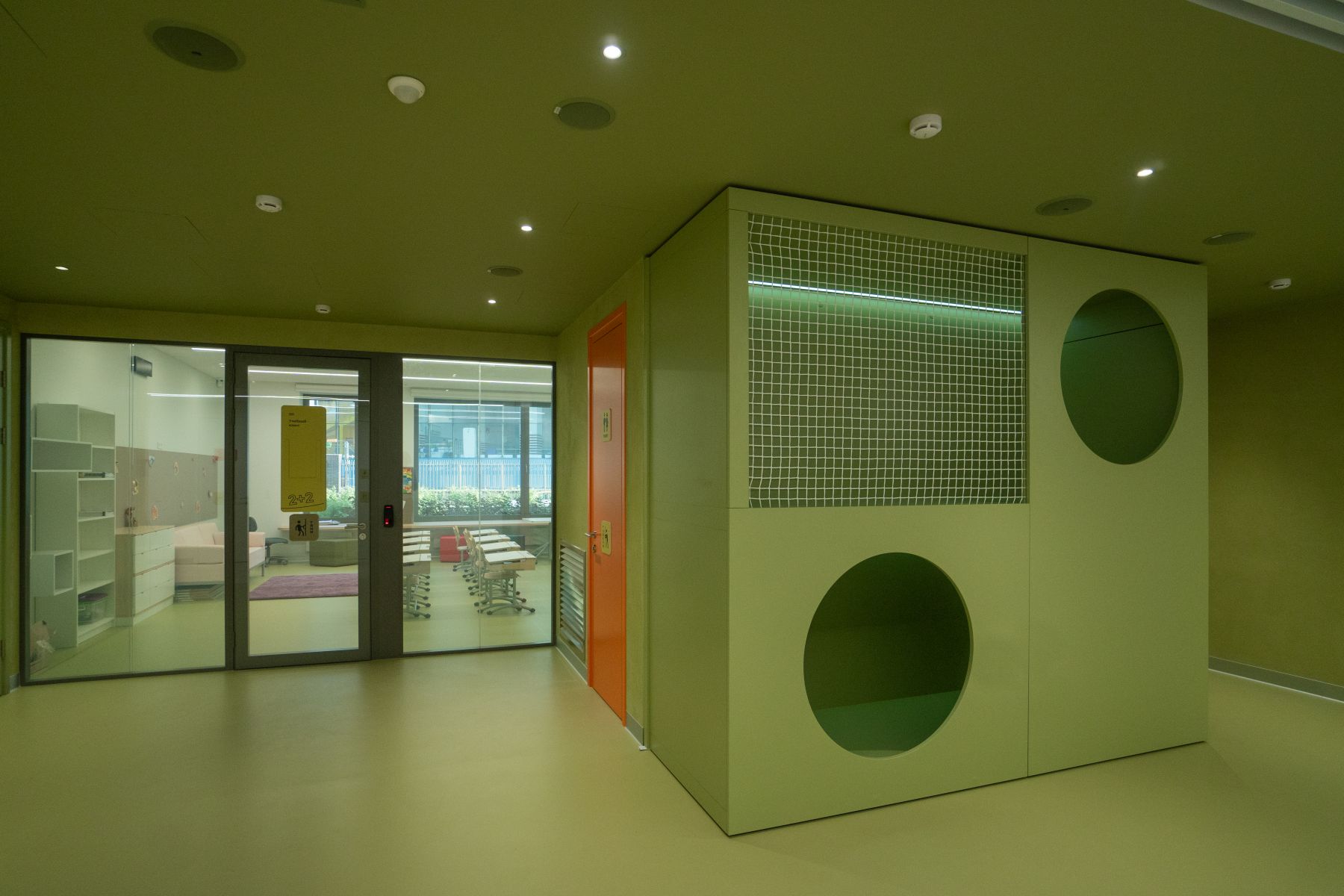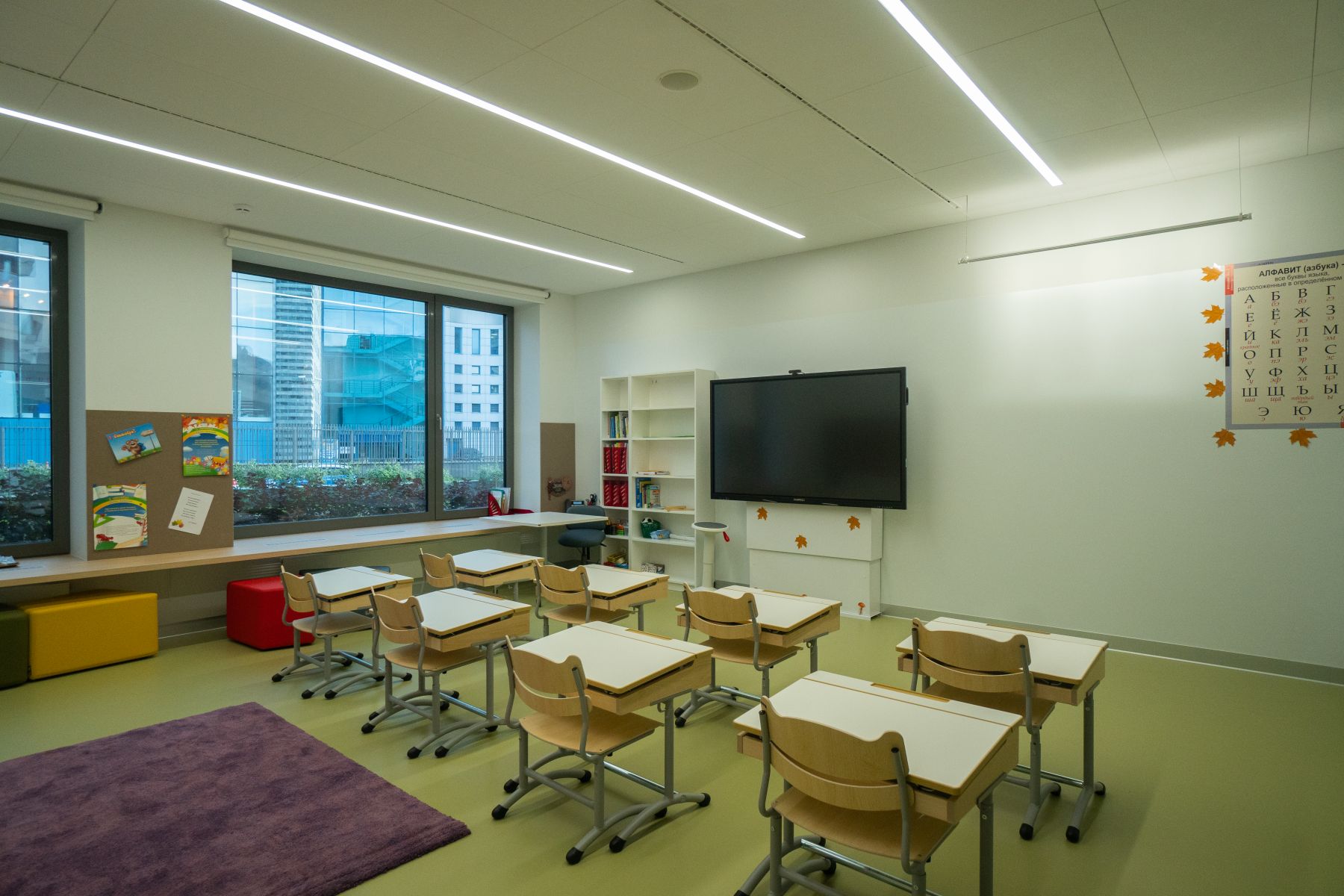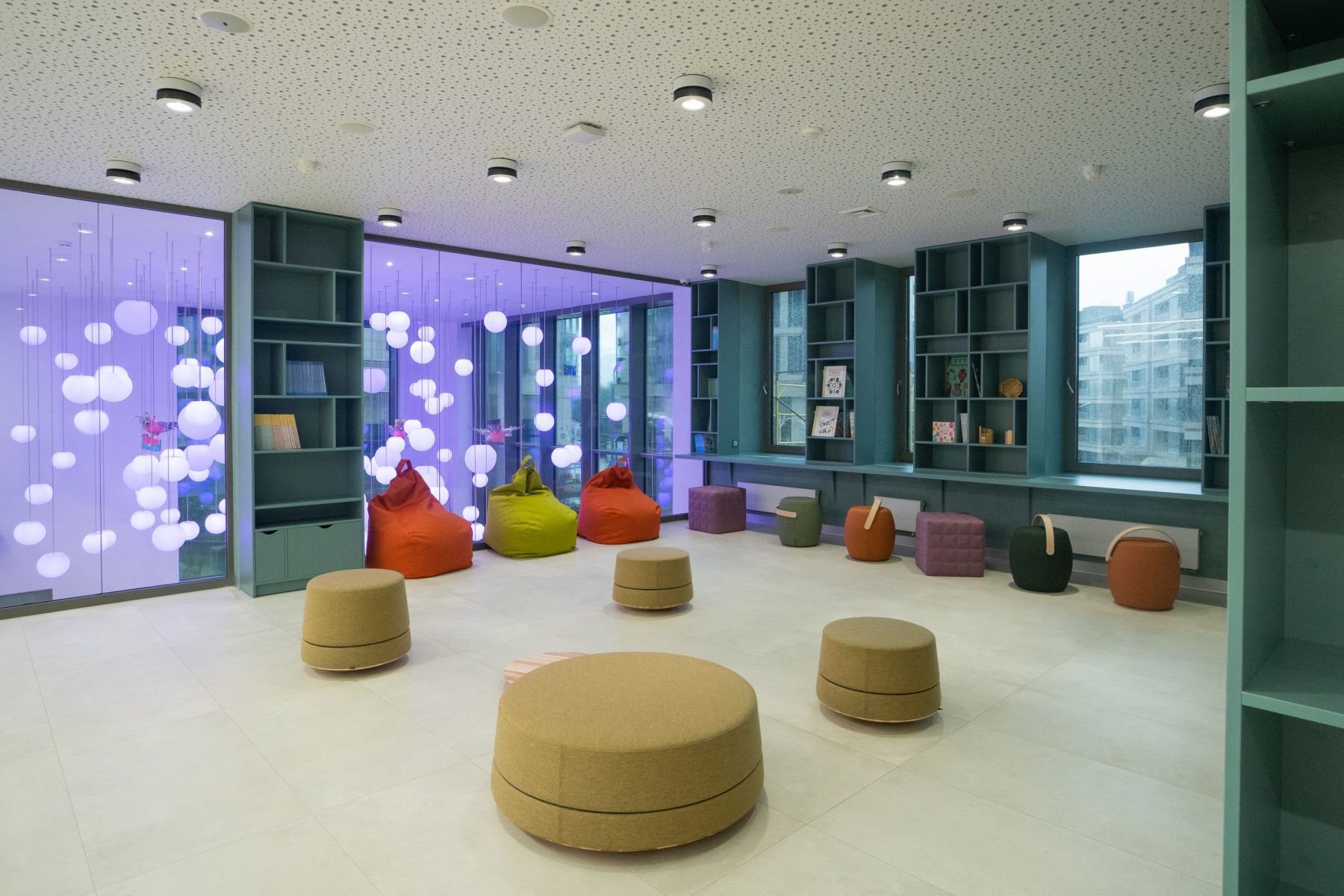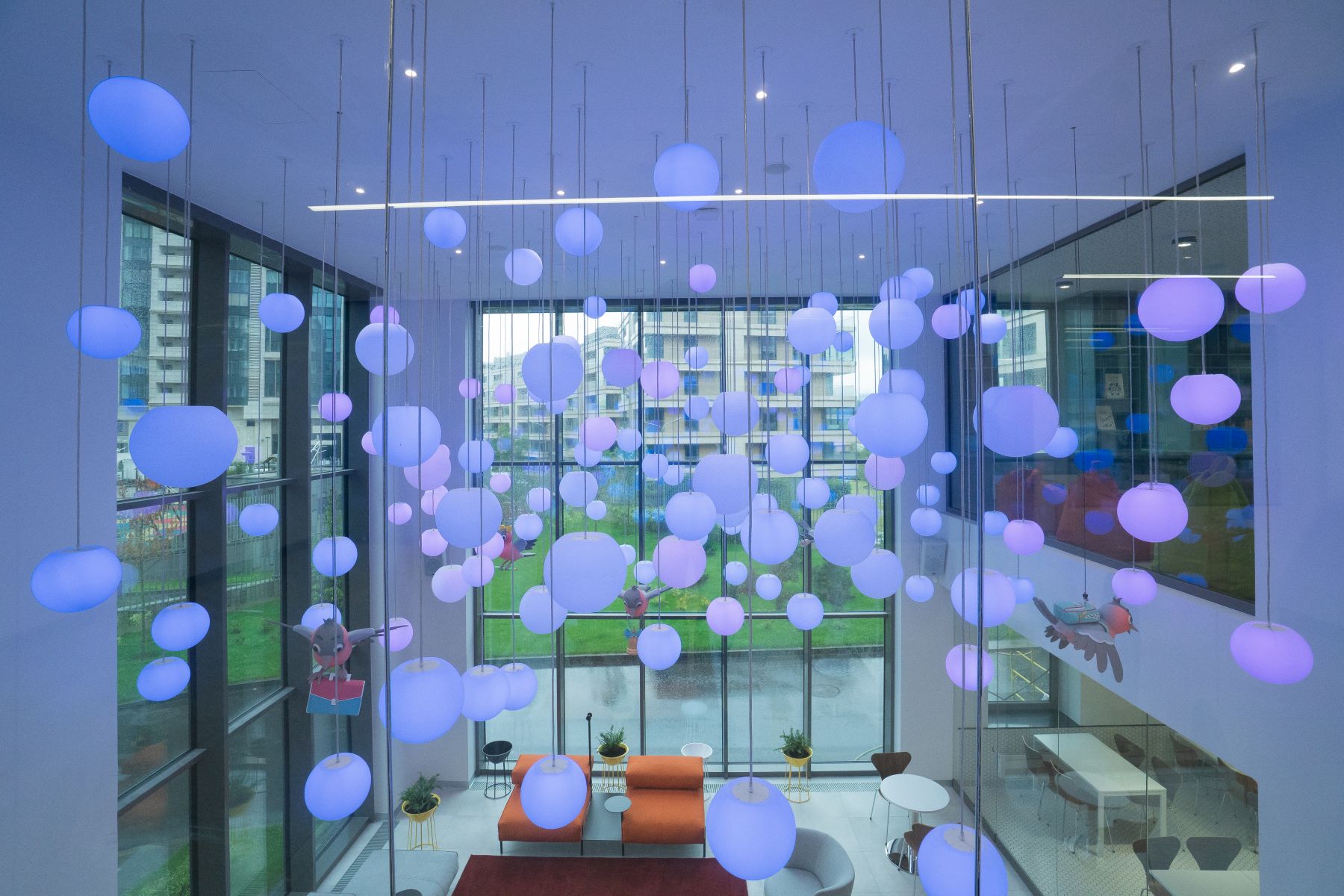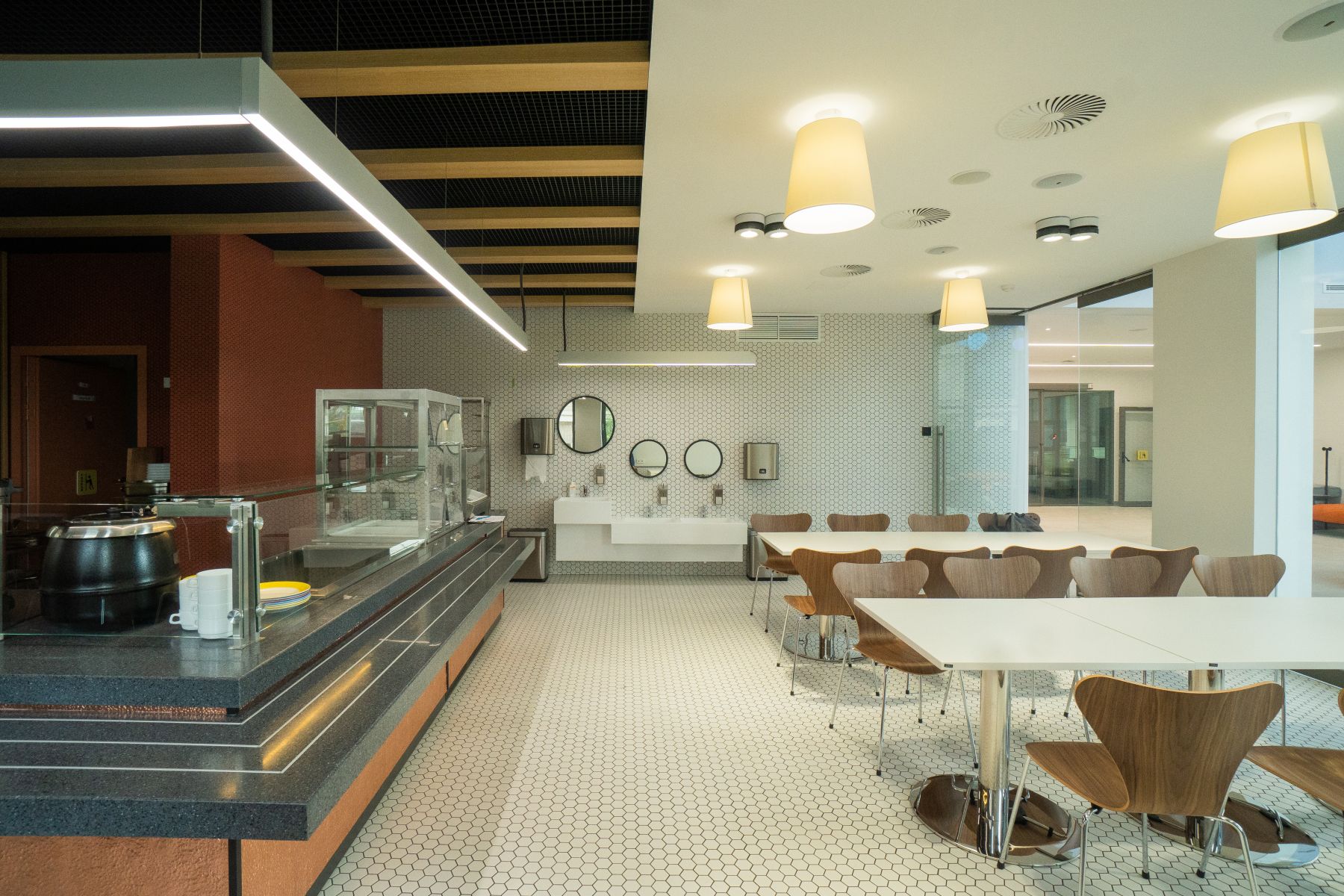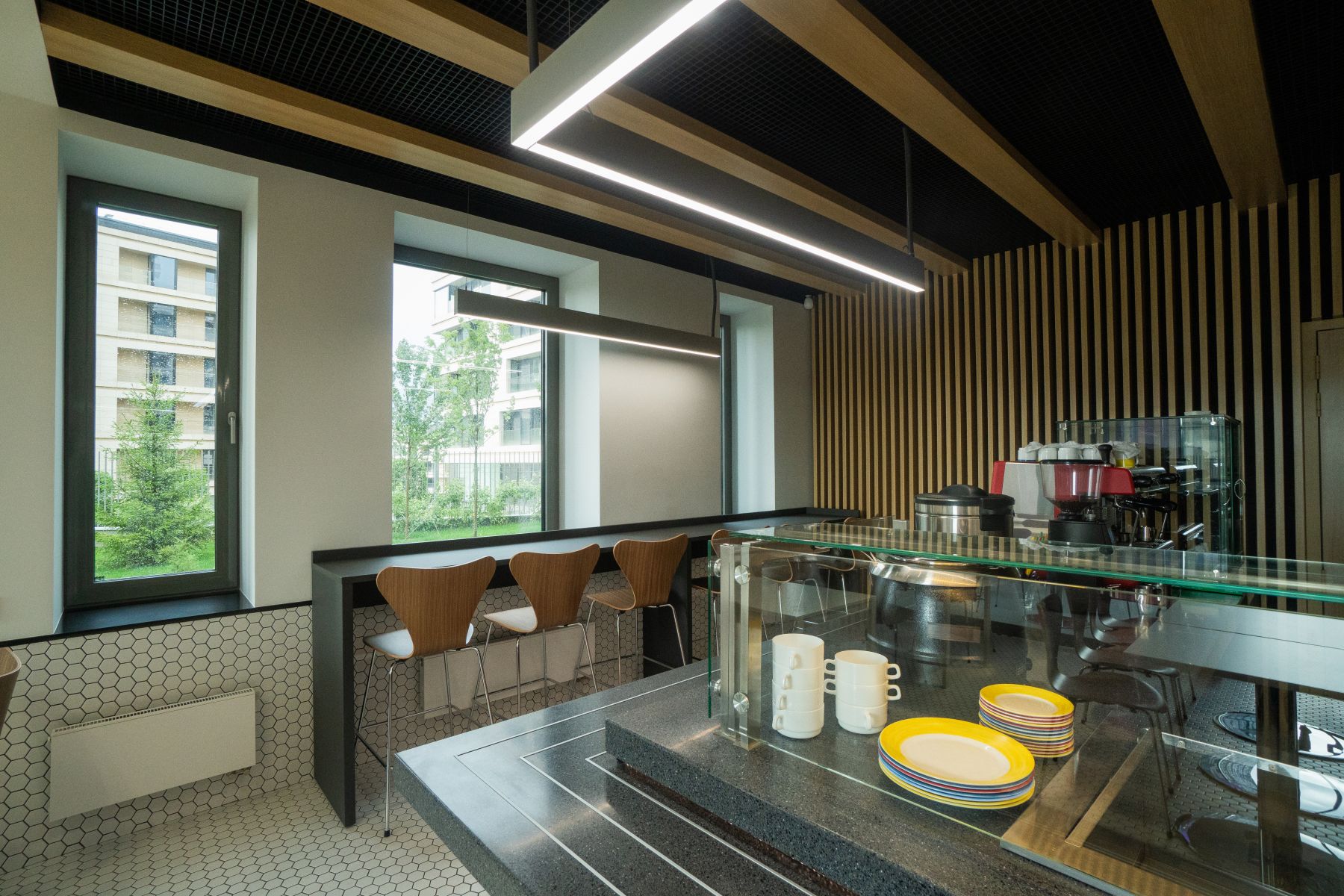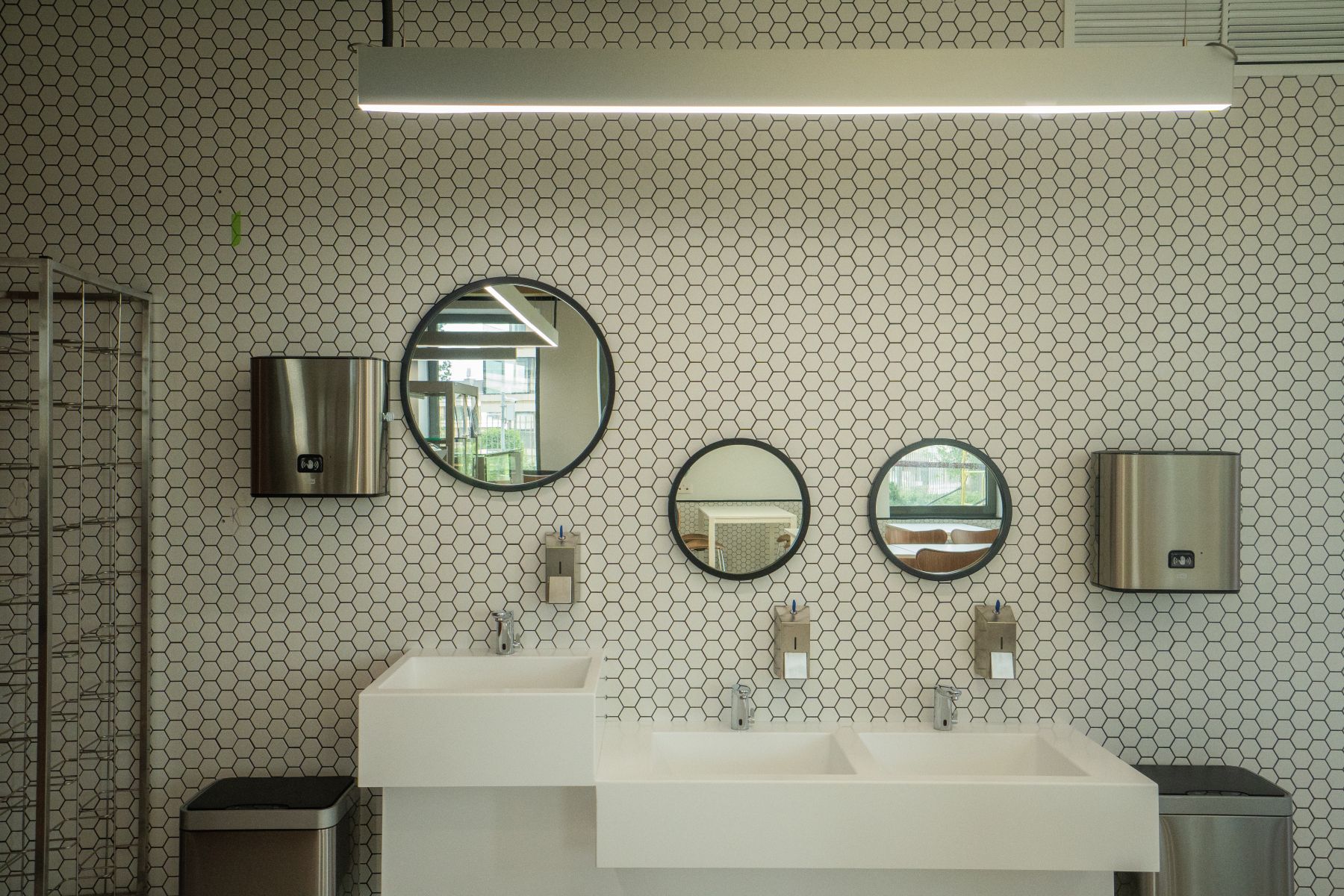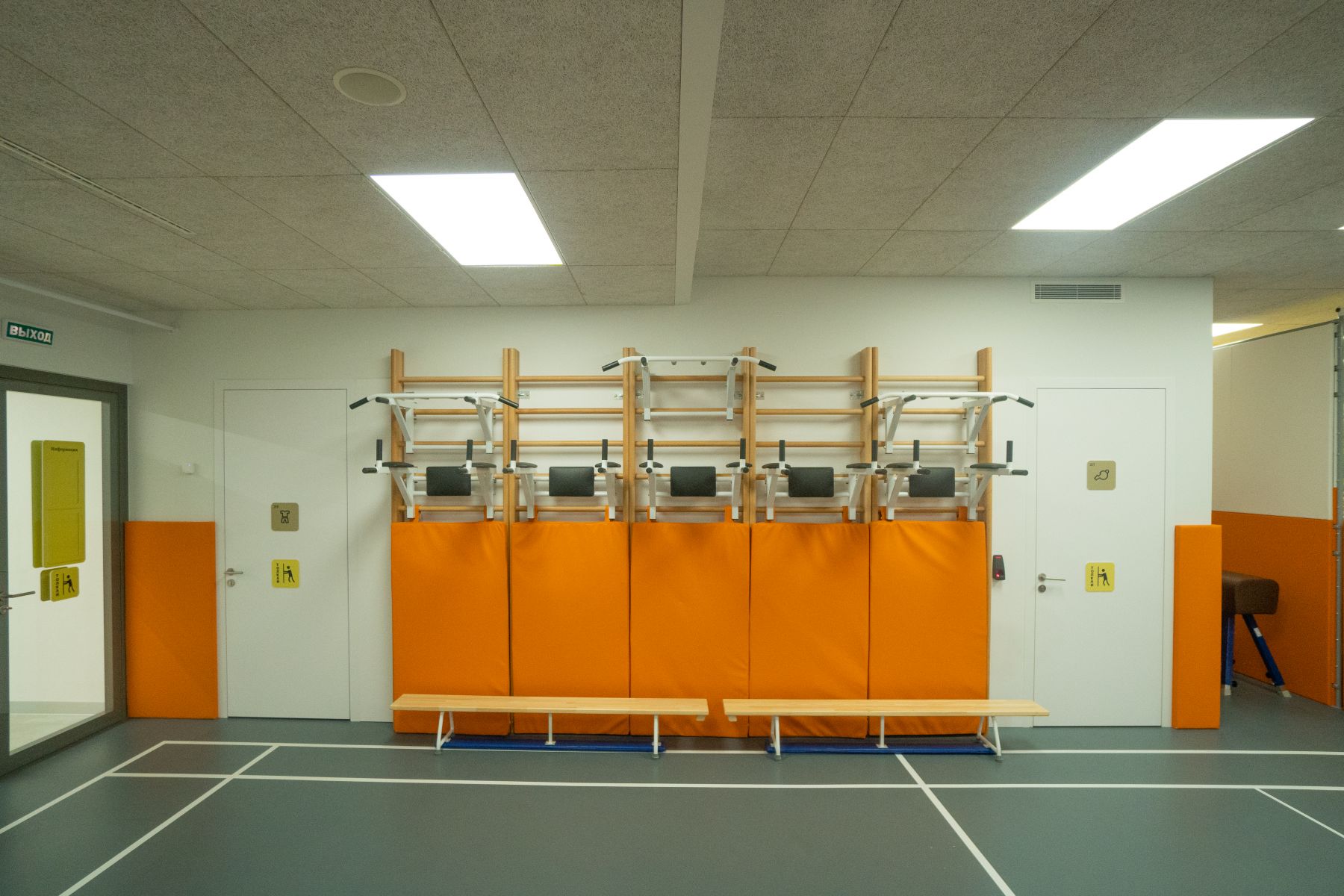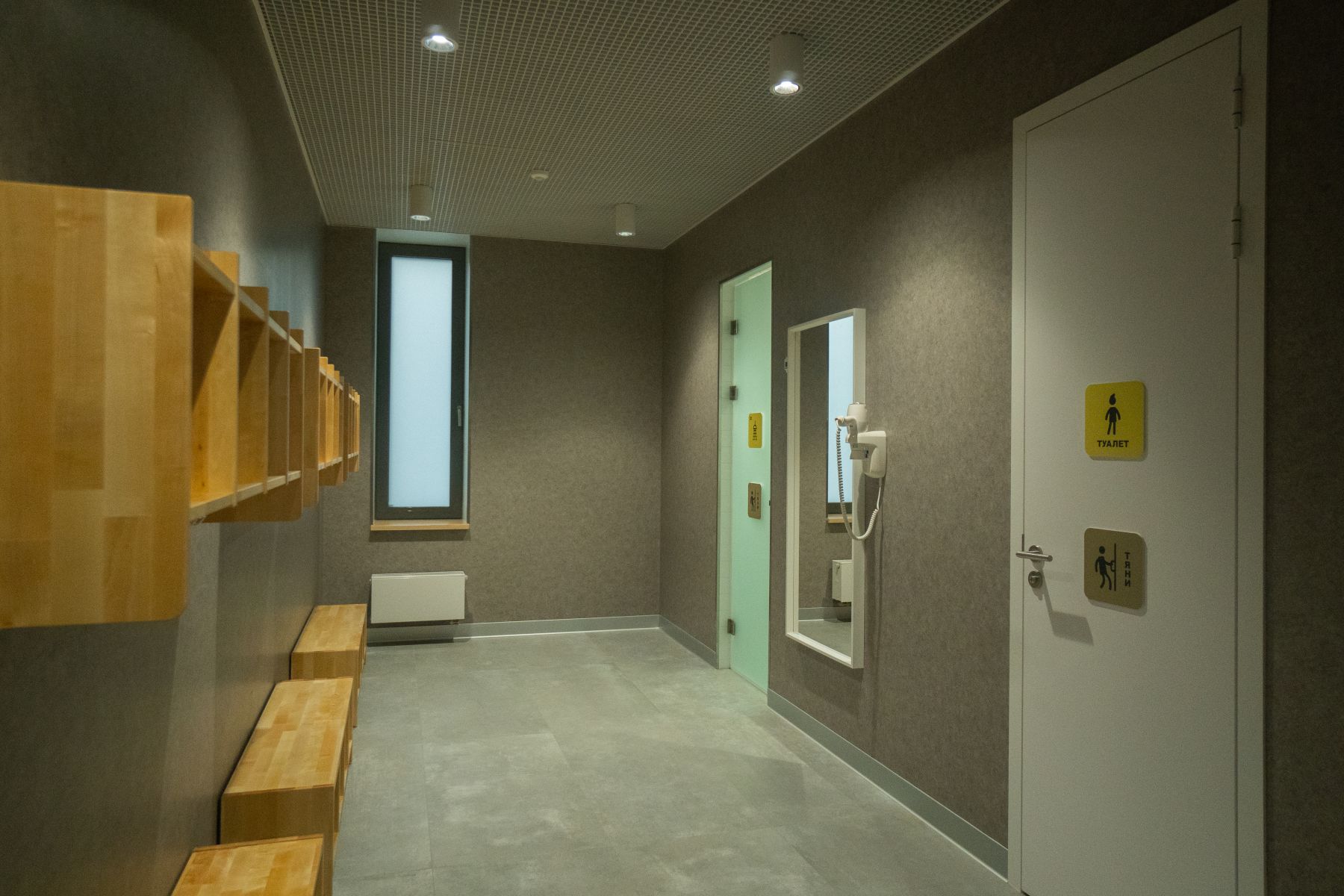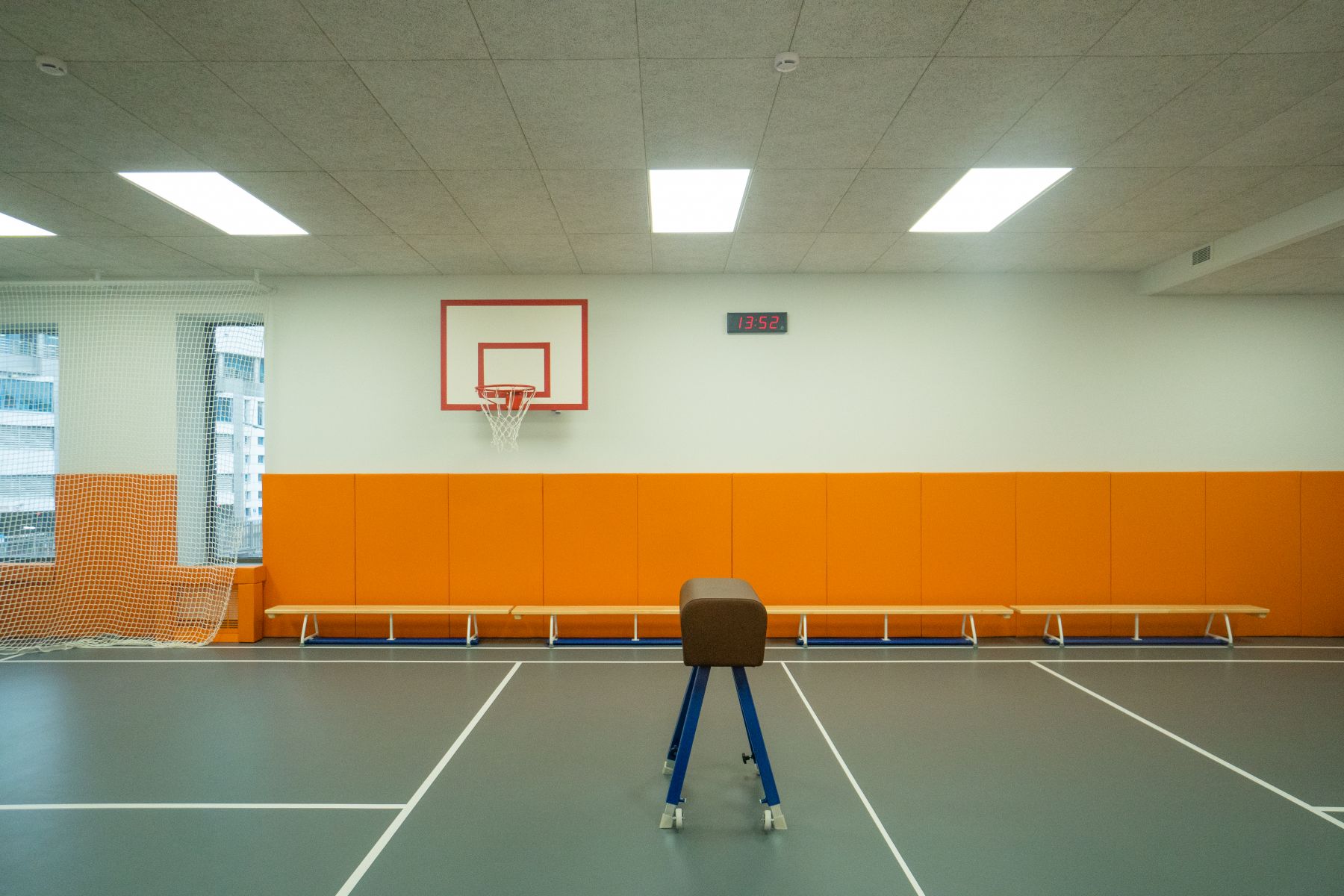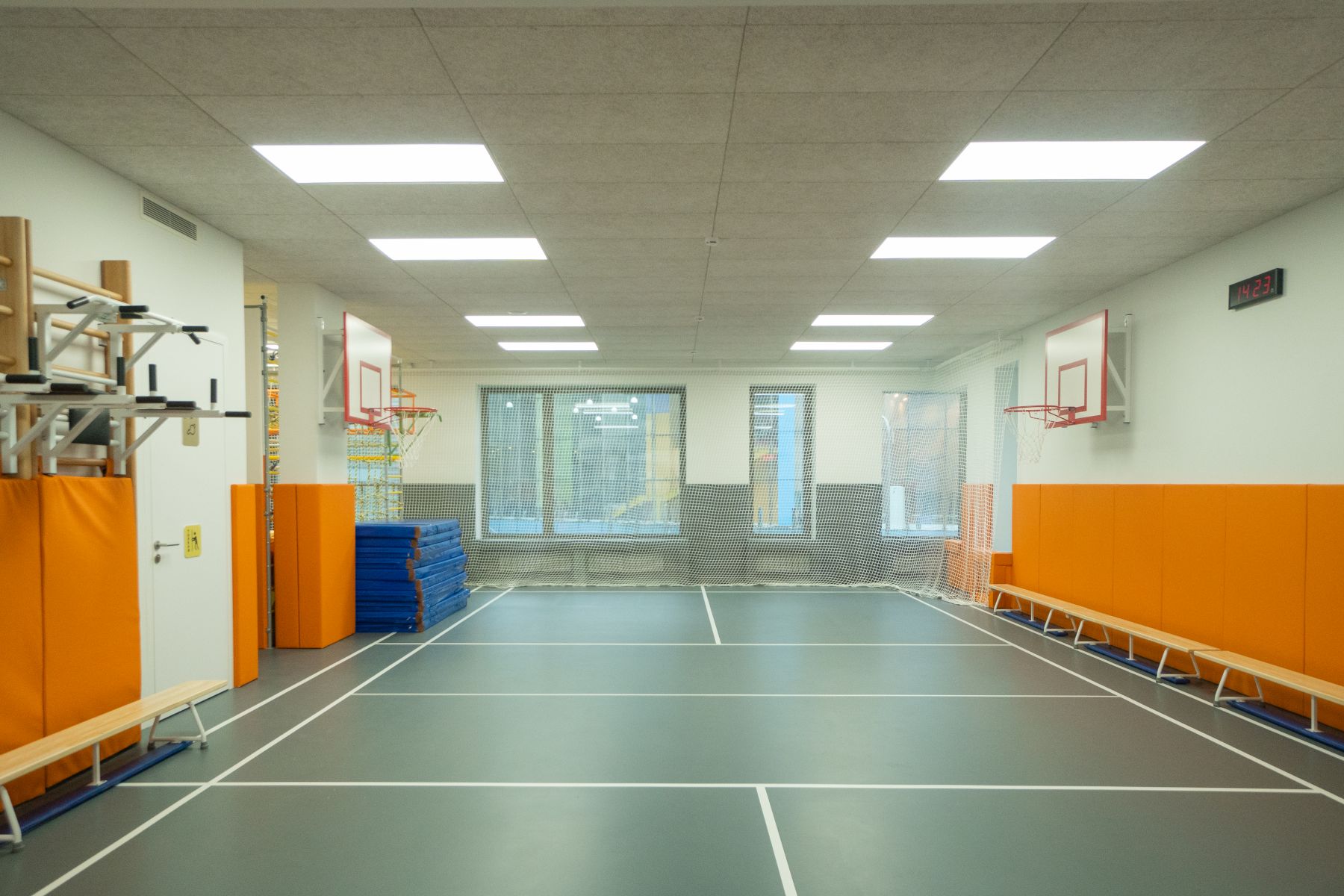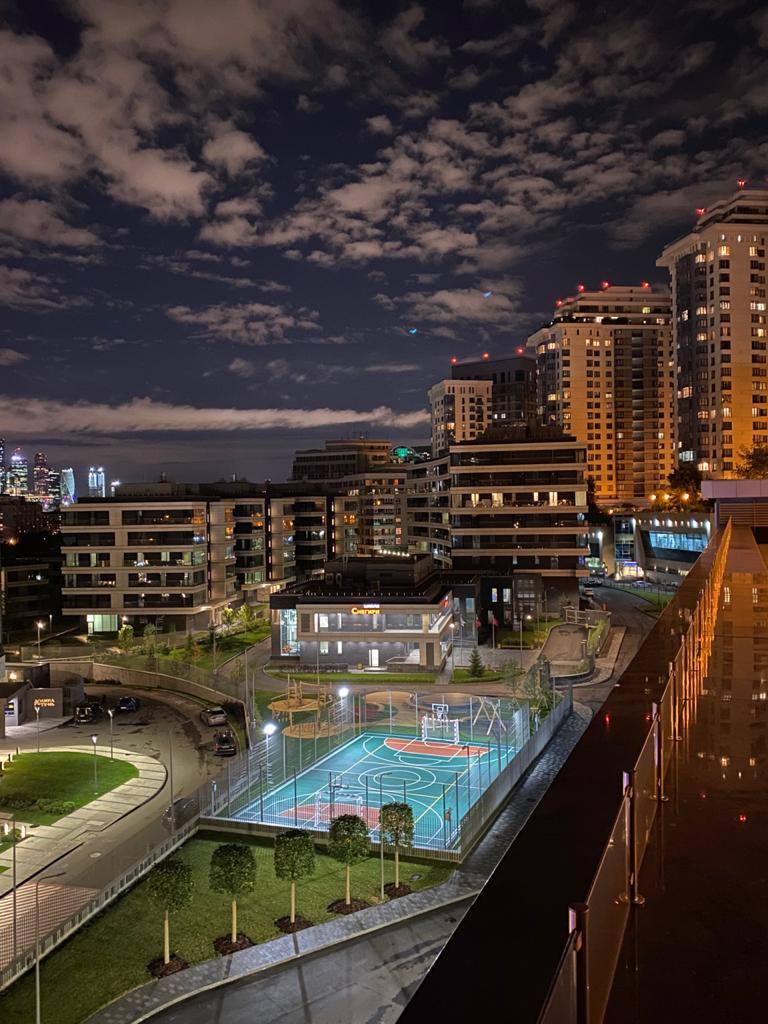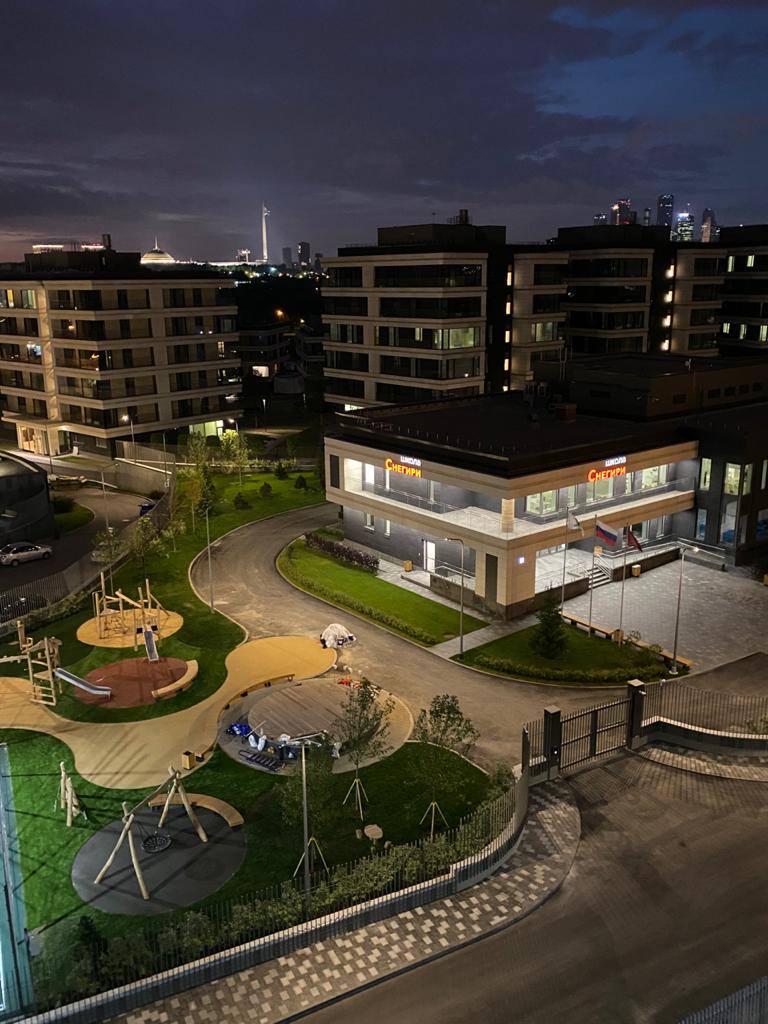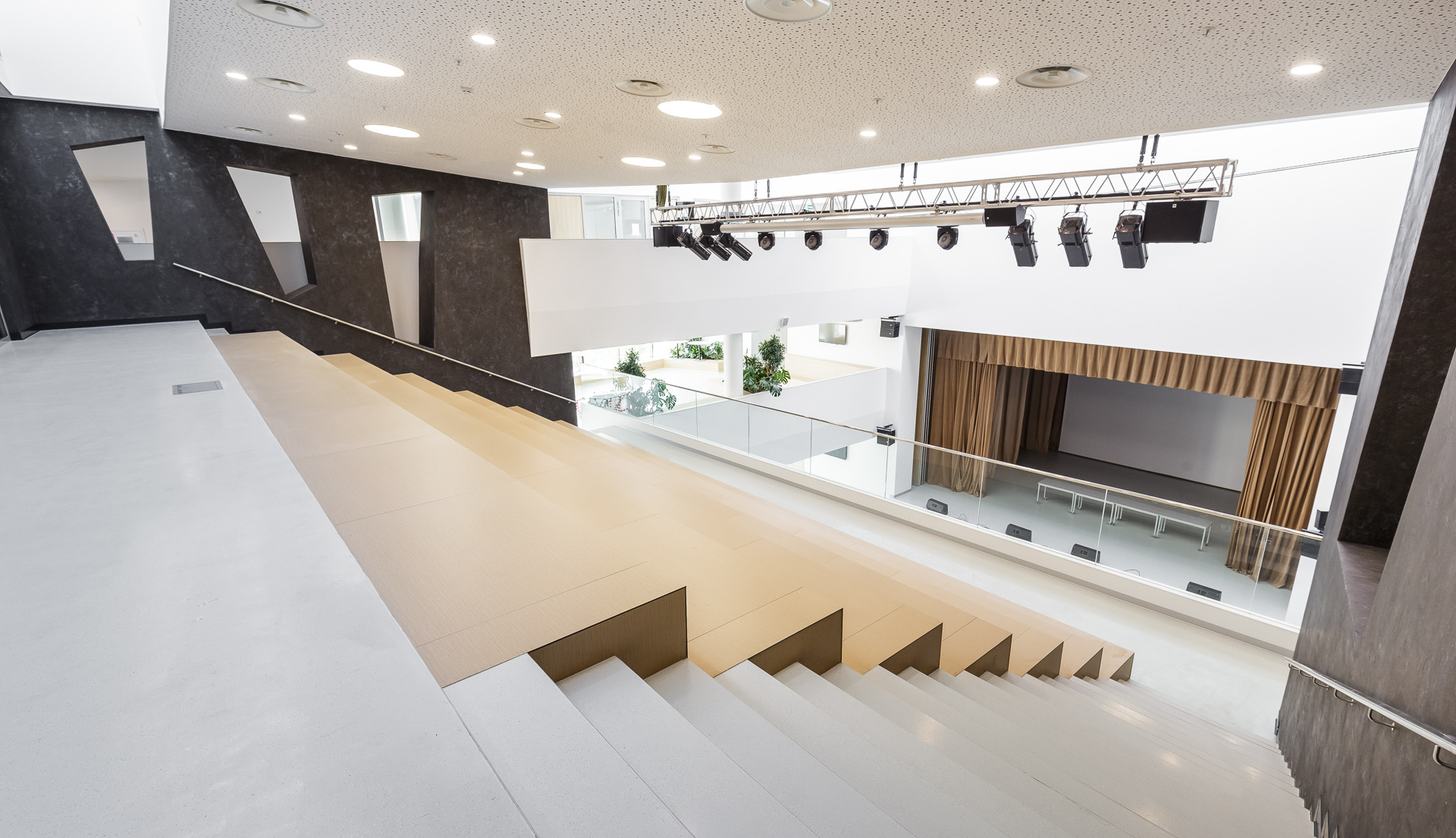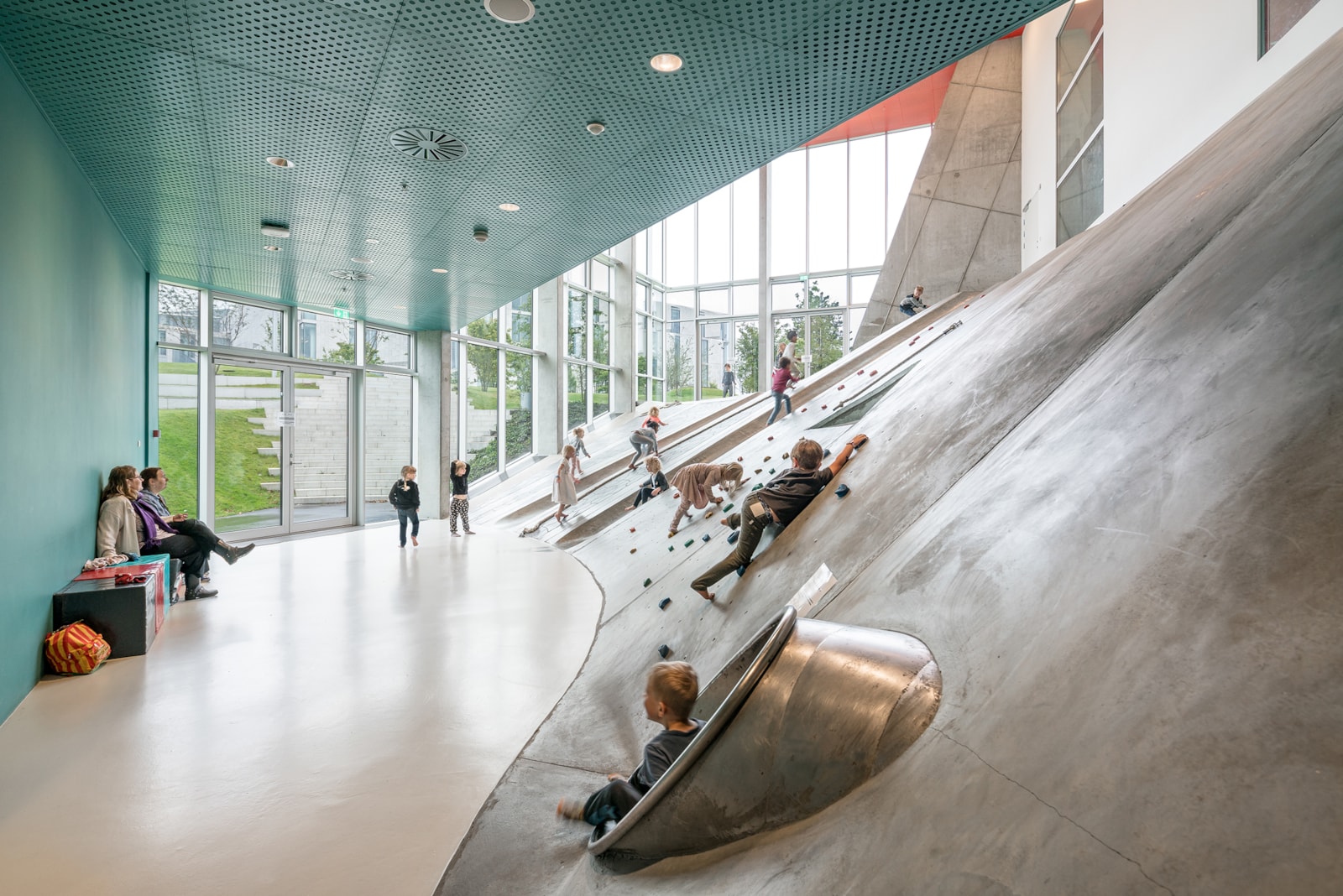The Snegiri School that opened in Moscow on September 1, 2020, stands out among all the primary schools by several parameters at once. The building is technologically advanced. And some engineering solutions were applied here for the first time in the educational environment. The school was built with the private funds, while 10-15% of the construction budget was successfully saved in the process. The school was fully built and equipped in 11 months. It was necessary to figure out how to set priorities in relation to school construction, when the deadlines are tight, the budget is not infinite and the goal is to create an innovative project.
The Snegiri School is located in a two-storey building. Its area is 3,000 m2 with a basement taking one third. The building is designed for 96 children — some preschool groups and a primary school for 1–4th grades.
The concrete structure was erected several years ago — there were plans to make a nursery school here, but they fell through. In 2019, the building was bought out for a school: it’s was vacant and in a good condition. When reconstruction works started EdDesign company became a technical customer. “A finished school — the most innovative one — was to be completed in less than 11 months. Many colleagues considered it impossible,” Elena Aralova, CEO of EdDesign notes. “But I was motivated, it was interesting to create interiors and the technology from scratch.”
Good engineering and its cost
The Snegiri School is innovative in terms of engineering systems. Fine engineering was set as a priority from the beginning — it was critical for the customer to make the school very modern and technologically advanced. That said, some solutions were used for the first time in the educational environment, so they were specifically adapted for various educational scenarios.

The house where the school is located is truly smart: all the communication system management comes down to a single KNX monitor. All the internal services — lighting, climate control, ventilation, the height of curtains, etc. — can be regulated with a few buttons.
How does it work? KNX consists of execution and system units, as well as sensors (buttons, switches, thermostats, weather stations). The best possible temperature and humidity are programmed for every room, a CO2 sensor is set up along with the parameters that define a change of these indicators. The system is measuring these indicators all the time; it can reorganize them automatically, for example, by increasing the amount of air in the room when it’s full of people.
The school features an electricity control system: the light is turned on in the class only as soon as a teacher shows up there. Putting a finger or a card to the electronic reader, the teacher ‘allows’ powering electrical sockets in the classroom. Due to this solution it was possible to locate the sockets in classrooms below the level required by standards, as a way to compensate for possible risks had been found.
Smart engineering was not particularly expensive for the project: the cost of a KNX-based control system amounted to less than 1% of all the engineering works or 25% of the automation section, Elena Aralova says.
Another innovation applied is a translucent film for glass. The founders of the school wanted to make it open, so instead of the walls in classrooms and even in a gym there are glass partitions. To hide the classroom from prying eyes if necessary there is a special film on the glass: it allows varying the transparency of glass (it can become matted, opaque). It is also regulated from the KNX panel.
“The customer trusted us and constructors enough and delegated the right to solve specialized issues,” Aralova explains. “We conducted a comparative analysis of other solutions available in the market and proved that the suggestion was justified.” For example, the cost of the film depended on the supplier, as well as its color, amount and the manufacturing procedure (whether it was made at a plant or applied to the installed glass). It increases the glass partition budget for no more than a quarter. In the Snegiri School the film increased the cost of glass partitions by 10%. “We also assessed the cost of curtains in comparison to the film — the latter turned out 20-30% more expensive,” Elena Aralova notes.
